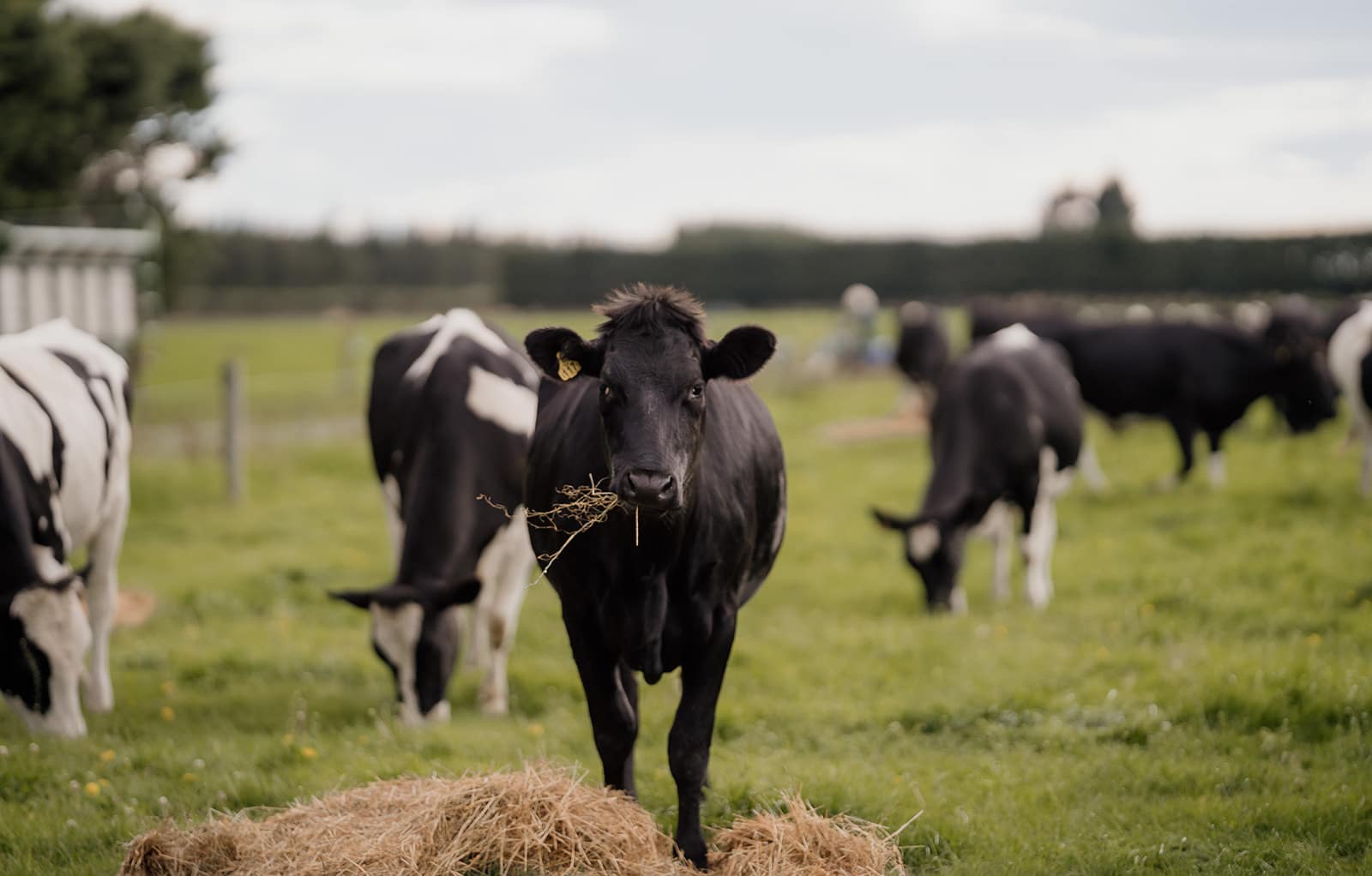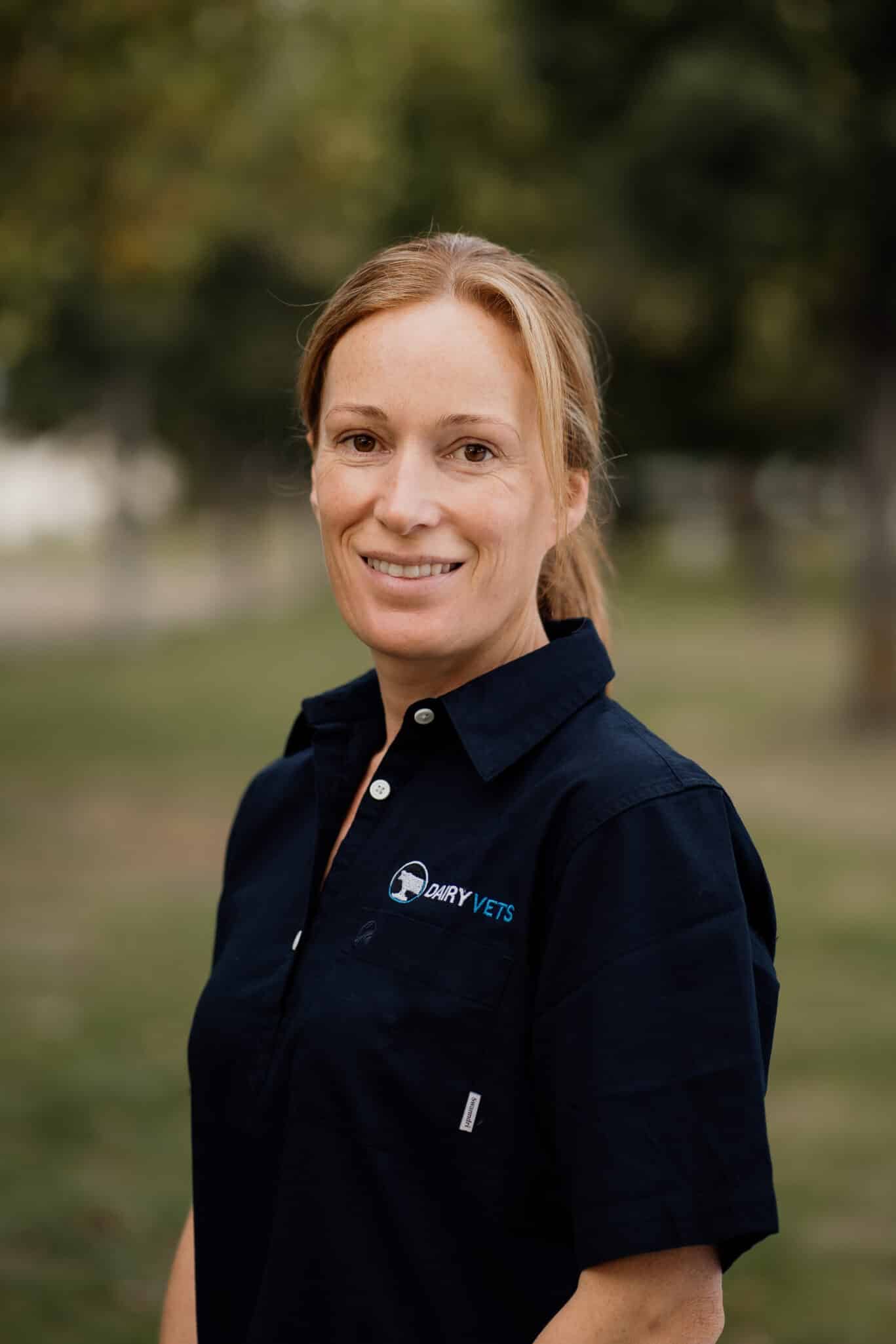
BVSc (Dist.)
If you have any questions please feel free to get in touch with us at info@dairyvets.co.nz

BVSc (Dist.)
If you have any questions please feel free to get in touch with us at info@dairyvets.co.nz
Request a Johne’s test on your next herd test if you have not already done so!
It is that time in the season that is the most opportune moment to perform a whole herd screen Johne’s test to find positive cows. Removing these cows now saves on the costs of wintering them and reduces the chances of infection in the biggest risk period during calving.
Cows infected with Johne’s generally do not perform well over the challenge of transition and calving, and it is often enough to tip them over the edge and they deteriorate clinically. In one case study performed by LIC, a third of cows testing high positive had died on farm during the calving period. Cows testing positive are more likely to leave the herd by dying on farm than going to the works, compared with cows testing negative.
Any cows which test positive, should be retested with a blood test to confirm the identity of that cow. In a season where reproductive results have been strong, there may be more flexibility to remove cows from the herd which test positive. It may well aid culling decisions, looking at SCC, udder conformation and mobility, if Johne’s status is known also. It is also becoming common practice for buyers to request a Johnes test before purchasing cows.
LIC Johne’s Dashboard Development
LIC are currently developing a dashboard, via MINDA, to better display and manage Johne’s positive cows within the herd, based on historic and current Johne’s results on farm. It is currently in a trial period at the moment, but from what we have seen it is looking to be useful tool to help visualise the extent of a JD problem on each farm. Particularly interesting is showing which cohorts have been most at risk to infection, and benchmarking compared with national average.
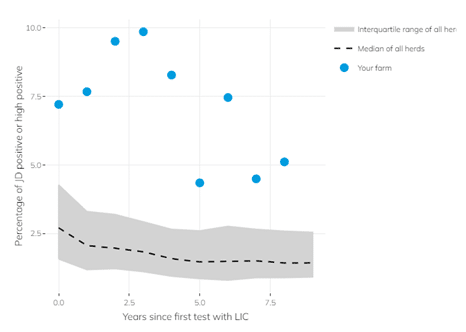
It is still in a prototype phase, but may well prove to be an important tool in seasons to come. Watch this space.
Below is a extract, taken from LIC’s website, about the importance of testing and showing how missing a year’s testing can cause Johne’s prevalence to resurge.
Prevalence of JD positive and high positive results in herds testing with LIC 2013-2023
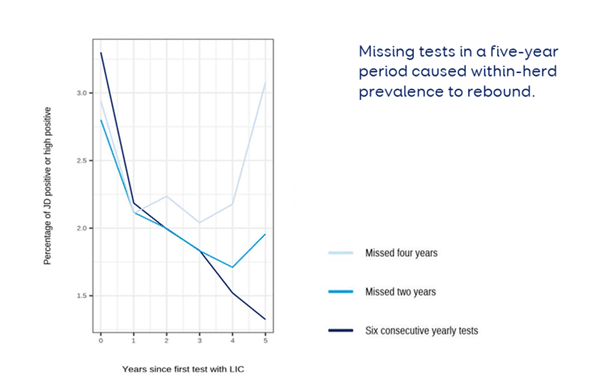
* Note this is industry median data so may not predict what may happen on individual farms.
Key takeouts from this graph:
Interpreting the results
The Johne’s ELISA is a very specific test – which means if a cow tests positive we know she is positive. However, sensitivity is poor, which means if a cows tests negative, it does not necessarily mean she isn’t infected with Johne’s disease. In any case, culling positive cows is the best way to make big leaps in managing Johne’s.
Below is a summary table explaining what each individual result means.
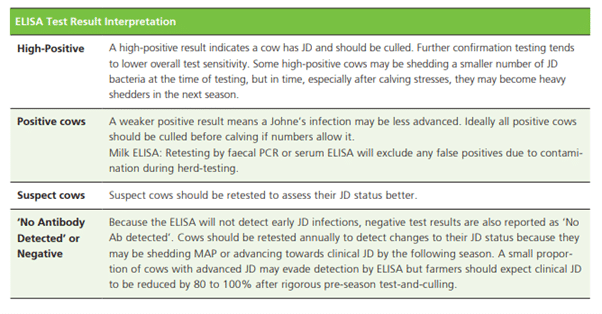
Testing and culling cows is of course only part of the solution. Management of the disease on farm will help mitigate spread. Below are some good resources available discussing management options, and further information on testing.
Resources
Dairy NZ Johne’s Disease Management – https://www.dairynz.co.nz/media/gyibqbzc/animal-johnes-disease-management.pdf
Dairy NZ Johne’s Laboratory Testing – https://www.dairynz.co.nz/media/brtkqlv2/johnes_disease_laboratory_testing_a4_booklet_web_april_2018.pdf
LIC Johne’s Herd Test – https://www.lic.co.nz/products-and-services/animal-health-and-dna-testing/johnes-disease-testing/
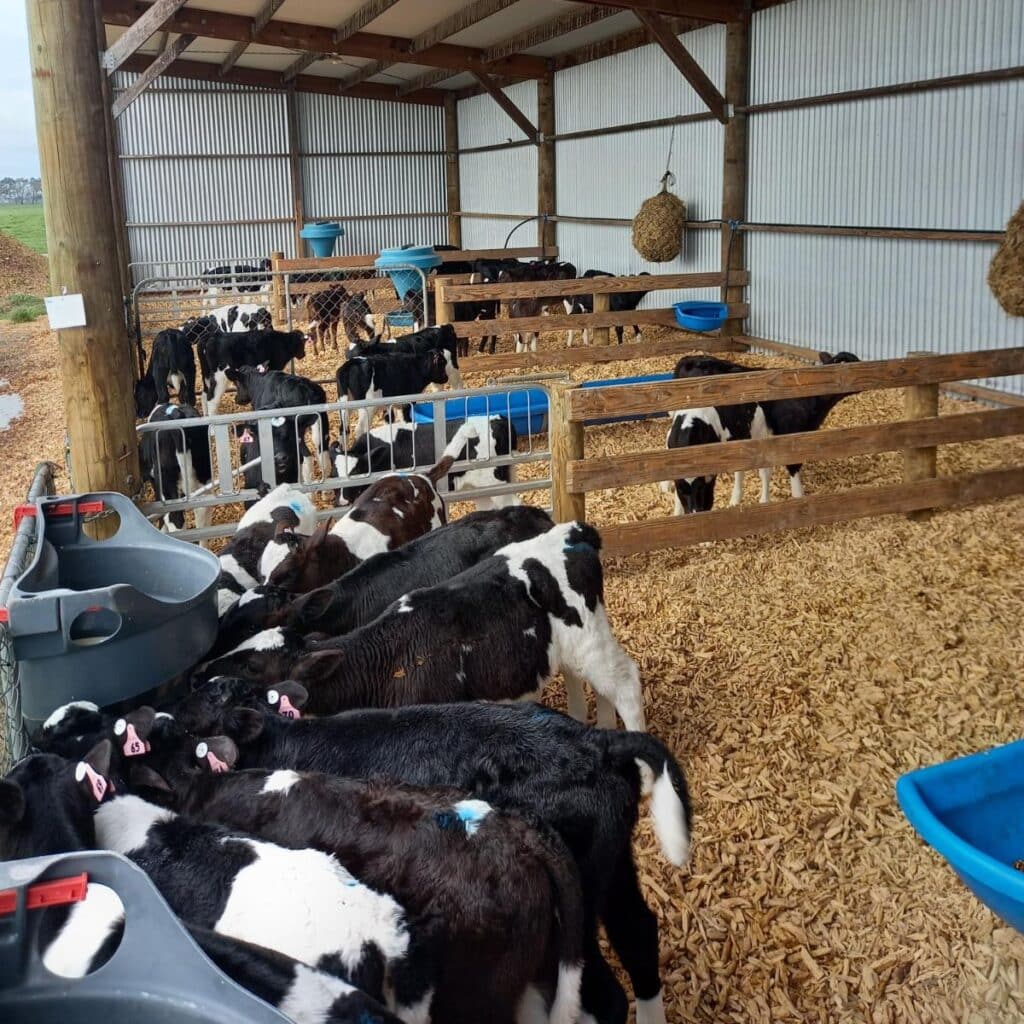
Towards the end of August scouring calves become more common. It is likely that this is because the pathogen load in the calf pens has risen at the same time that colostral antibodies are declining.
There is a risk period between about 1 and 4 weeks of age when antibodies from colostrum ingested in the first day (passive immunity) has declined but that from exposure to pathogens (active immunity) is not yet optimal.
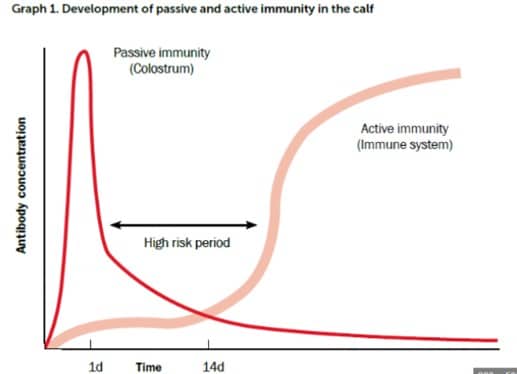
Housing/Isolation:
If only a few calves are scouring, it is worth isolating these in a sick pen. If more become sick, it is best to leave the calves where they are. One teaspoon of rotavirus scour can infect thousands of calves so if the cause is infectious, it is likely all calves in the pen have already been exposed. It is still a good idea to put calves that are worse affected in a small pen together as they can be treated and monitored better than in a big group. If left together ad lib electrolytes will often be drunken by the healthy calves with the ones that need it more missing out.
Avoid overcrowding pens. If pens must be reused, consider replacing or topping up the bedding. Keep hay feeders high so hay stays clean and calves are not eating off the ground. Clean water troughs daily. This will help reduce the spread of disease and encourage water intake.
Electrolytes and feeding:
. Scours cause loss of fluids and body salts leading to dehydration. Electrolytes are the main treatment for scouring calves. Below is a treatment protocol for calves with mild to moderate scours.
. Scouring calves that refuse to drink any milk or very little, have a slow skin tent, weakness +/- sunken eyes are very unwell/dehydrated and need to be treated early and frequently with electrolytes.

.Scouring calves should continue to be fed milk if they are willing to drink it. Weight loss will be less than if fed electrolytes alone and recovery faster.
. Warm milk will encourage sick calves to drink.
. It is recommended that scouring calves are fed milk twice a day with electrolytes in between.
Unwell, scouring calves are less likely to want to drink one larger feed and will receive more nutrition if fed twice.
. It is best not to tube milk to scouring calves – if a calf refuses to drink milk, replace that milk feed with an extra electrolyte one. If they are still refusing to drink after 48 hours, consult your vet.
Tubing electrolytes is fine, and often necessary.
. Use a high quality electrolyte such as Enerlect.
Rheumocam:
Scouring calves often feel miserable. Rheumocam (1ml/40kg under the skin) reduces fever and inflammation and will help get the calf back drinking again.
Talk to your vet if you are having scours in your calves. They can provide further advice on managing the outbreak and test samples to see what pathogen/s are involved. This will help determine if additional treatments are needed and will help with strategies for prevention in the future.
The risk period makes preventing scours challenging, however colostrum management in the first 12 hours of life is still the number one factor in preventing scours or reducing the severity of illness.
Calves that have a higher initial peak in colostral antibodies will take longer to decline and will be less severely affected if infected. Ensure every calf receives 4-6L of 22% + brix tested colostrum within 6-12 hours of birth. Organise calf blood testing with your vet annually to check that colostrum managements is working on your farm.
Multimin has New Zealand data to show that calves injected with 1ml at birth have a 50% reduction in the risk of disease and death until weaning. Optiguard is a pathogen binder that may help prevent and minimize the severity of scours. Vaccinating with Rotavec or Scourguard will boost antibody levels to Rotavirus, Coronavirus and E.coli in colostrum. Continuing to feed fresh or preserved transition milk for as long as possible, especially from vaccinated cows will help ‘mop up’ pathogens in the gut as it passes through.
Managing a calf scour outbreak can be stressful. Ask for help. Have a good recording system to keep track of sick calves and treatments, to ensure no calf slips through the cracks and to allow information to be shared between calf rearers.
Housing/Isolation:
If only a few calves are scouring, it is worth isolating these in a sick pen. If more become sick, it is best to leave the calves where they are. One teaspoon of rotavirus scour can infect thousands of calves so if the cause is infectious, it is likely all calves in the pen have already been exposed. It is still a good idea to put calves that are worse affected in a small pen together as they can be treated and monitored better than in a big group. If left together ad lib electrolytes will often be drunken by the healthy calves with the ones that need it more missing out.
Avoid overcrowding pens. If pens must be reused, consider replacing or topping up the bedding. Keep hay feeders high so hay stays clean and calves are not eating off the ground. Clean water troughs daily. This will help reduce the spread of disease and encourage water intake.
Electrolytes and feeding:
. Scours cause loss of fluids and body salts leading to dehydration. Electrolytes are the main treatment for scouring calves. Below is a treatment protocol for calves with mild to moderate scours.
. Scouring calves that refuse to drink any milk or very little, have a slow skin tent, weakness +/- sunken eyes are very unwell/dehydrated and need to be treated early and frequently with electrolytes

BVSc (Dist.)
If you have any questions please feel free to get in touch with us at info@dairyvets.co.nz
| Leptospirosis Leptospirosis is a common and important infectious disease in New Zealand. Infected animals can pass it on to humans through their urine or any urine contaminated water. It is seen mostly in farm workers and people who work in meat processing plants. Symptoms in humans include fever, chills, vomiting and diarrhoea and it can progress into Weil’s disease which is a serious health risk. Not only is it very important as it can affect us, but it can also be a cause of production loss on your farm. It can cause different problems in cows including mastitis, abortions, kidney disease and stillbirths. This commonly manifests as a cause of poor fertility in herds. Cows can also become carriers and still shed infection in their urine, making it an unseen risk to staff. The best way to control Leptospirosis on farm is through vaccination. Cows and R2s should be vaccinated around dry off and R1s can be vaccinated from late summer to autumn so that they coincide with herd vaccination in future years. The Leptoshield vaccine comprises 2 vaccinations 4-6 weeks apart. This should be given to calves and any stock on farm with unknown vaccination history. An annual booster is then all that is required to ensure your animals are protected. Calves can be vaccinated from as early as 4 weeks of age with 7 in 1 (2 vaccinations as calves with a booster now). Other methods of control include vermin control as it can be spread from rats, hedgehogs, possums and other farm animals in their urine. Ways of protecting yourself and workers include ensuring protective clothing and gloves are worn at all times. If you have any queries about leptospirosis on your farm and need any further advice in regard to vaccination schedules, please do not hesitate to call in to have a chat with one of our vets. We have resources we can use for staff training and certification of lepto use for your farm. |
Bovine viral diarrhoea occurs throughout NZ and the impact is a huge costs: studies show approx.. $140/cow/year for an infected herd. The biggest cost to farmers relates to early pregnancy losses.
Continue reading
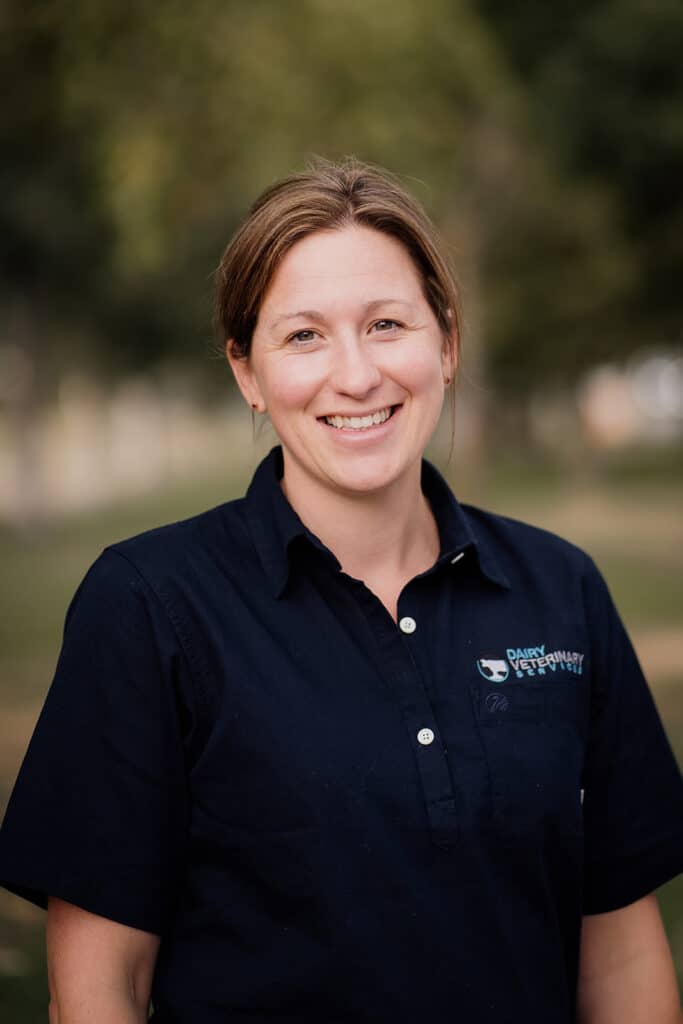
Brought up on her families pedigree Holstein herd and after studying an Animal Health degree at Harper Adams Agricultural College, Anna moved to Sydney to study her Vet degree. After graduating in 2006 she then worked in mixed practice in NSW before working in England in dairy practice before the move to NZ in 2010.
Anna undertook and passed a membership in dairy cattle medicine in 2013: this is recognition of advanced level knowledge and experience in this topic. Outside of work her three children, horses, dogs and Suffolk sheep stud keep her busy!
Professional interests include reproduction, mastitis and infectious disease, particularly BVD. Anna has a keen interest in data analysis and identifying areas where gains can be made in reproduction and animal health. Accredited BCS scorer.

Nathan completed an Agriculture degree before spending two years working in the USA on feedlot dairies and a dairy farm in NZ before heading back to University to study Veterinary Science. After graduating he worked in dairy practice in the UK before settling in NZ.
Passionate about all aspects of dairy farming he ran a calf rearing business in the UK and then started rearing dairy heifers and carrying over dairy cows in NZ. Nathan enjoys spending time on the mini farm while away from work, his cow passion continues with his Speckle Park stud.
His professional interests include calf rearing, nutrition and farm economics. Accredited BCS scorer.

Angharad (Harry) joined the practice in December 2020 after graduating from the University of Liverpool. She has always had a keen interest in NZ dairy farming and grew up with kiwi cross cows on her parents block calving dairy farm in Leicestershire. Professionally Harry has interests in young-stock management and reproduction but mostly just enjoys all aspects of being out on farm.
Outside of work she spends her time swimming and hiking and is very much looking forward to taking advantage of all the beautiful scenery NZ has to offer.
Accredited BSC scorer.

Phil has worked with Dairy Vets for since 2017, before that working locally as a dairy vet for three years. He has made NZ his home after being brought up on his family farm in Oxfordshire and working in farm animal vet practice in Wiltshire, UK. Professionally he has a passion for cow lameness and surgery. Outside of work he is an adrenaline sports enthusiast and enjoys skiing and trail riding to name a few!
Accredited BCS scorer. Accredited Health hoof advisor. In the process to become an accredited Fonterra milk quality assessor.

James joined us as a locum in 2017 having worked as a farm animal vet in Scotland. It didn’t take him long to realise NZ had much better weather than Scotland and became a permanent member of the team! James enjoying taking himself on exciting adventures all over the south island when he’s not working. He enjoying tramping, mountain bike riding and crossfit.
Professionally James has a interests in surgery and mastitis. Accredited BCS scorer. In process to become an accredited Fonterra milk quality assessor.

Polly joined our technician team in 2020. Originally from the North Island she bring a lot of dairy experience having working on dairy and research farms as well as more recently being involved with the M.Bovis response on their sampling team.
Accredited Dairy NZ condition scorer.

Sherree has been part of the team since 2017, bringing with her a wealth of experience; having worked locally as a full time dairy technician for 15 years. She is team leader for our technician team and loves getting out on farm and getting stuck in!
Outside of work she enjoys multi-sport events, mountain biking and the outdoors.
Accredited Dairy NZ condition scorer.

Abbie joined us as a full time technician in July 2019 after doing a couple months as a casual on the teat seal team. She is originally from South Otago and was brought up on dairy farms.
Outside of work Abbie enjoys competitive horse endurance and competitive trail riding where she has won national awards on her horse Sparky. Also enjoys anything outdoors from mountain biking to hunting.
Accredited Dairy NZ condition scorer

Nicky has been with us since we first started having a manned office. She is our office manager and keeps all the team and the office organised! As well as reception duties she is kept busy with stock control and managing accounts
Nicky enjoys fishing and boating and family time outside of work

Jo joined Nicky in 2019 to help with our calving season; we then realised we couldn’t manage without her and she became a permanent team member! She is the always happy voice at the other end of the phone!
When not at work she enjoys spending time on her lifestyle block or heading away in the Motorhome with her husband and their dog Wolfie.
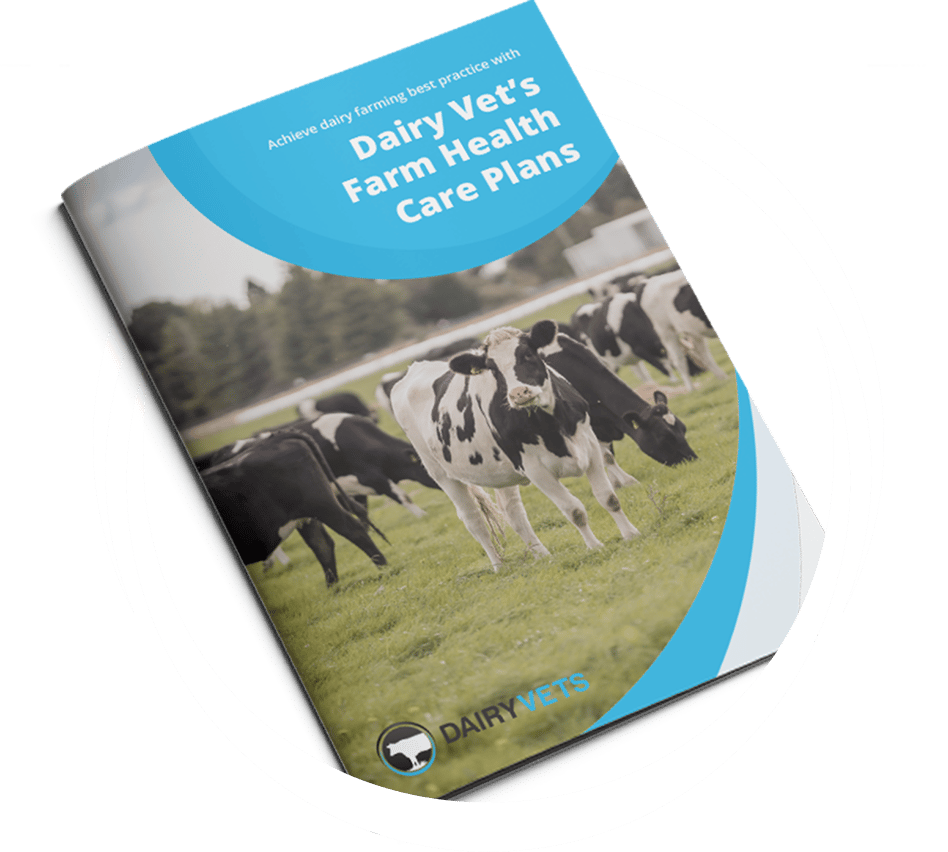
Thank you for your enquiry. Please complete the form below and a copy of our Farm Health Care Plans, will be emailed to you. If you would like to discuss plan pricing and any other details, please feel free to contact us.

Thank you for your enquiry about our Farm Health Care Plan packages and pricing. Please complete the form below and we will email to you a copy of our brochure including pricing.
Please note pricing will be emailed by our administration team during normal business hours.
If you would like to discuss plan pricing and any other details, please feel free to call us on 03 308 0493

Dan is originally from Sydney, where he graduated from University of Sydney in 2017. He spent his first 2 years in practice working in Yorkshire Dales in the UK. He has always had a passion for dairy work and in 2020 made the move to New Zealand to join the team at Dairy Vets. Professional interests include bovine surgery and lameness.
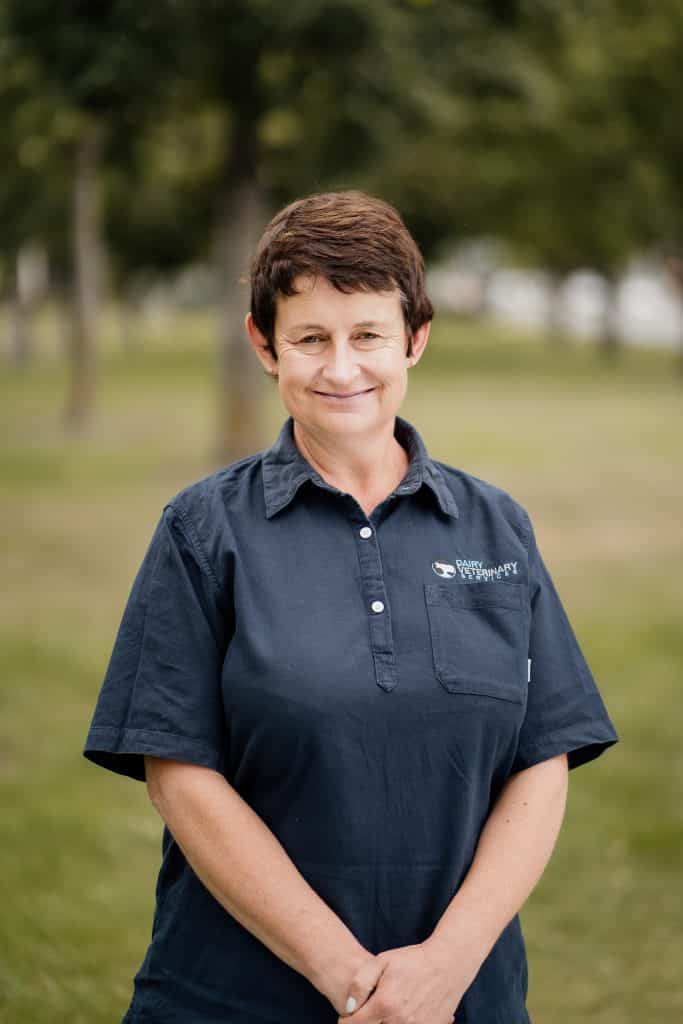
Sally joined the team in January ’21 with our second clinic opening in Rakaia. She brings with her a wealth of experience having been dairy farming since 1995. Outside of work she enjoys the outdoors, spending time helping on the run-off with the young stock, catching up with family, walking and gardening.
She looks forward to seeing you at both offices, splitting her week between Ashburton and Rakaia.

Hi, I’m Vanessa and I’m the full-time based Rakaia person. I live in Leeston so not too far away; I have 2 late teen boy’s and several animals. When I’m not working, my family keeps me busy, mainly running around my oldest son and his rugby at Southbridge, at markets for my own small home business in crafts and doing countless loads of washing! I grew up around sailing, horse riding, sheep and cropping so cows are something I’m busy learning now.

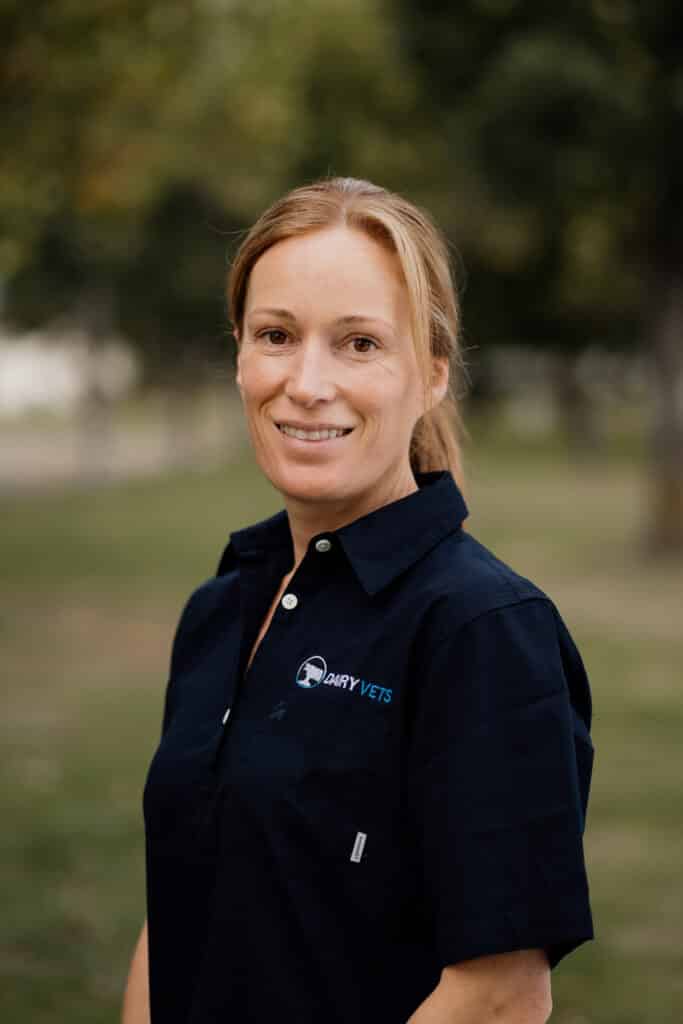
Anita started at Dairy Vets in March 2021. She grew up in South Canterbury and has previously practiced as a large animal vet in the North Island and as a locum in Mid Canterbury. Anita and her husband have been contract milking on a dairy farm at Dorie since 2012. Outside of work she is kept busy with 3 children, the farm business, various community roles and a bit of hiking, biking and netball.
She has particular interests professionally in milk quality, calf rearing, trace elements and lameness. Accredited Healthy Hoof provider.

Originally from a relatively small (by Mid Canterbury standards!) dairy farm in Aberdeenshire, Will graduated from Glasgow University in 2019 and worked in mixed practice in Scotland for 18 months. He then decided to come to Ashburton to gain experience where’s there’s an abundance of cows and learn about New Zealand farming systems. Accredited Dairy NZ Body Condition Scorer.
Outside of work Will is a long suffering Scotland rugby fan and is keen to bag as many huts as he can out tramping on the South Island.

